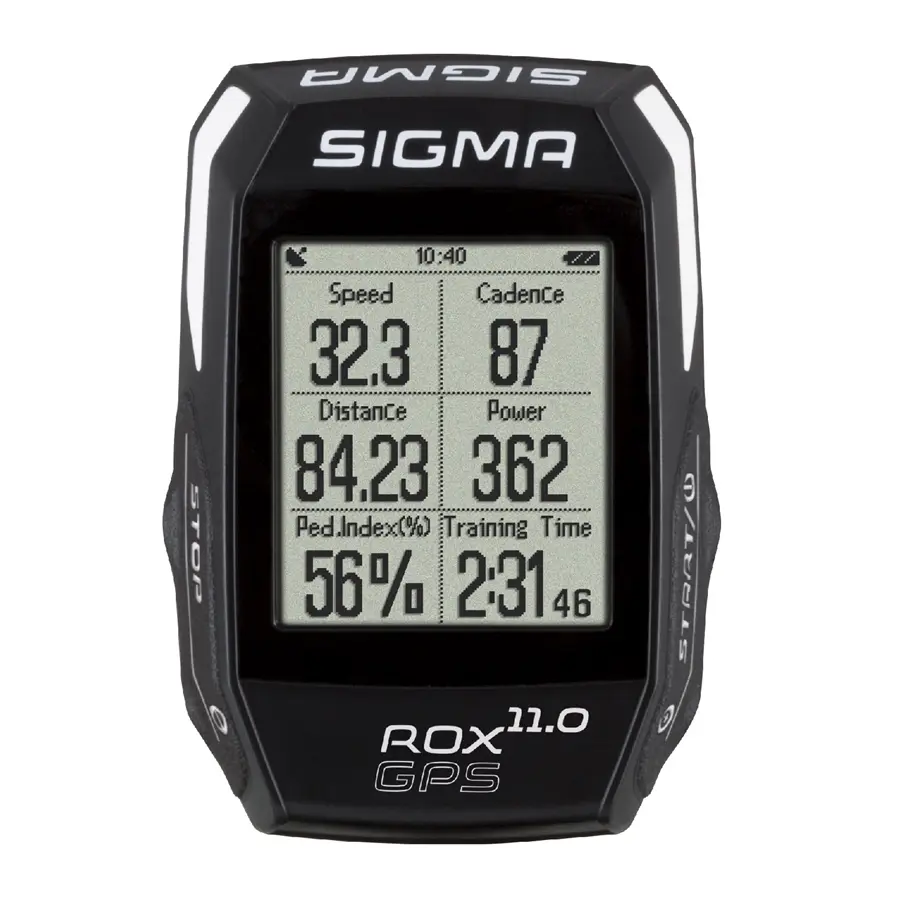Sigma Sport Rox 11.0

Description
While the Sigma Sport Rox 11.0 may look like a basic bike computer with its LCD monochrome screen, it still offers all the basic tracking and GPS features you’d expect and in a package smaller than most other bike GPS devices we reviewed. But it does lack some advanced navigation features the best bike GPS devices include.
Pros: The Rox includes ANT+ sensor compatibility so you can monitor heart rate, pedal power and pedal cadence. The altimeter on this model is more accurate than with many others because rather than using the GPS, its measurements are based on atmospheric pressure. A 1,000-hour storage is much larger than many other GPS units we reviewed.
Cons: The user interface can be complicated to navigate, and it utilizes bread-crumb navigation rather than the turn-by-turn navigation you'll find in higher-end GPS models. It also does not have detailed mapping or live GPS tracking features. A 13-hour battery life is on the lower end of average, but will be adequate for most rides.
Bottom Line: A clunky user-interface and lower battery capacity may deter some cyclists, but the Sigma Sport Rox’s performance and functionality standout compared to similar models in the same price range.
Best for: A budget GPS for commuters or leisure riders who can deal without some advanced navigation features
Key Attribute: Design
Key Features:
- GPS Track-Navigation
- Waypoints
- Custom sport profiles
- Trainings views
Size:
- Weight: 2.2 oz
- Display: 1.7"
- Dimensions: 2.3" x 4.4" x 0.8"
